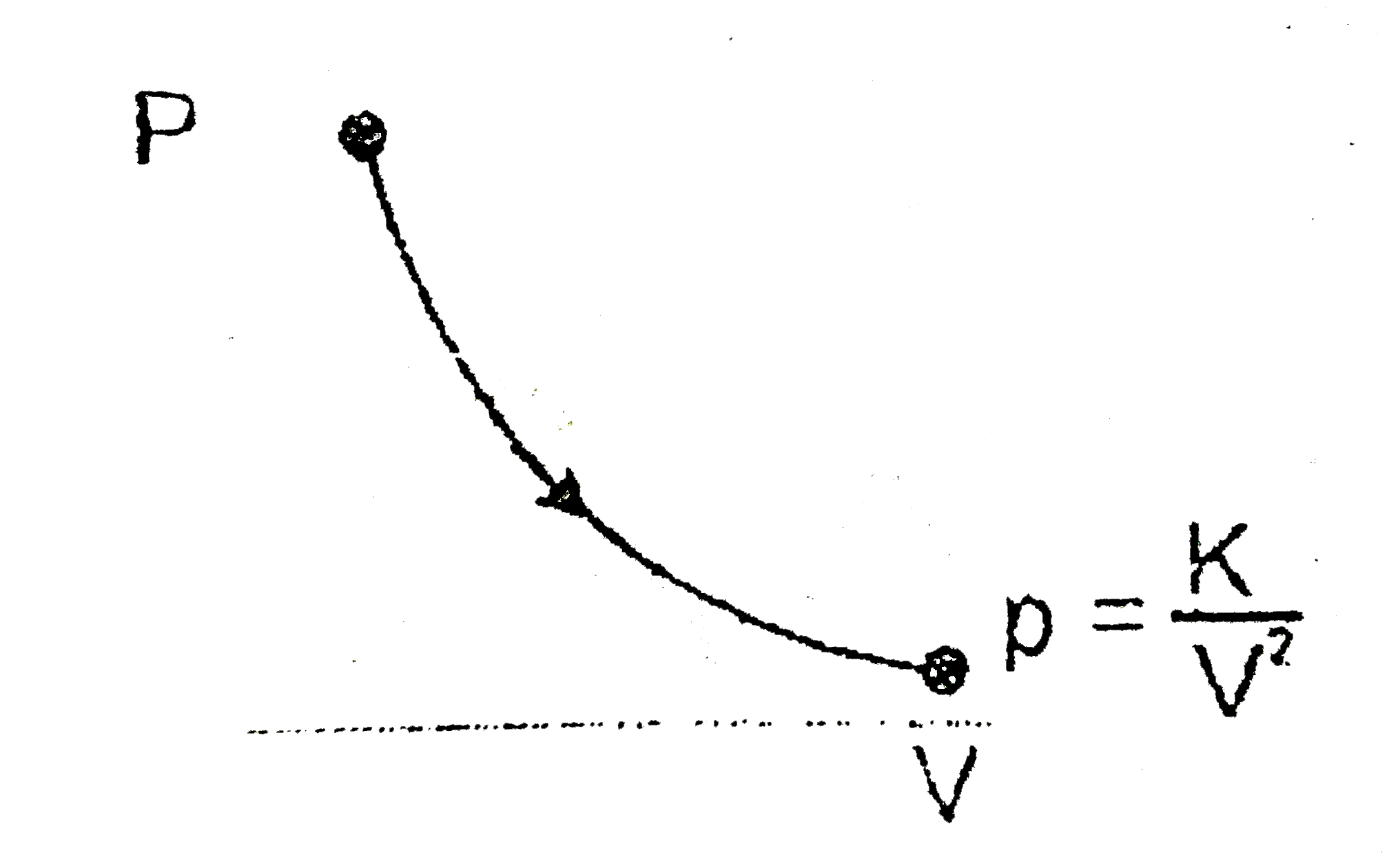A diatomic ideal gas is heated at constant at constant volume until the pressure is doubled and again heated of constant pressure until the volume is doubled. The average molar heat capacity for the whole process is
13R6
19R6
23R6
17R6
The correct Answer is:B
To solve the problem of finding the average molar heat capacity for the whole process involving a diatomic ideal gas, we will break down the steps as follows:
Step 1: Understand the Process
The process consists of two parts:
1. Heating at constant volume until the pressure is doubled.
2. Heating at constant pressure until the volume is doubled.
Step 2: Define Initial Conditions
Let:
- Initial pressure P0
- Initial volume V0
- Initial temperature T0
Step 3: Analyze the First Process (A to B)
In the first process (constant volume):
- The pressure is doubled, so PB=2P0.
- Using the ideal gas law PV=nRT, since volume is constant, we have:
PATA=PBTB
This implies:
P0T0=2P0TB⇒TB=2T0
- The change in internal energy ΔUAB is given by:
QAB=ΔUAB=nCVmΔT
where CVm for a diatomic gas is 52R. The change in temperature is:
ΔT=TB−TA=2T0−T0=T0
Thus:
QAB=n(52R)T0=52nRT0
Step 4: Analyze the Second Process (B to C)
In the second process (constant pressure):
- The volume is doubled, so VC=2VB.
- Since pressure is constant, we can use the ideal gas law again:
PBTB=PCTC
Here, PC=PB=2P0, and we need to find TC:
2P02T0=2P0TC⇒TC=4T0
- The heat added in this process is:
QBC=nCPmΔT
where CPm for a diatomic gas is 72R. The change in temperature is:
ΔT=TC−TB=4T0−2T0=2T0
Thus:
QBC=n(72R)(2T0)=7nRT0
Step 5: Total Heat for the Whole Process
The total heat QABC for the entire process is:
QABC=QAB+QBC=52nRT0+7nRT0=(52+7)nRT0=192nRT0
Step 6: Calculate Average Molar Heat Capacity
The average molar heat capacity Cm is defined as:
QABC=nCmΔT
where ΔT=TC−TA=4T0−T0=3T0. Therefore:
192nRT0=nCm(3T0)
Dividing both sides by nT0:
192R=Cm(3)
Thus:
Cm=196R
Final Answer
The average molar heat capacity for the whole process is:
Cm=196R
The process consists of two parts:
1. Heating at constant volume until the pressure is doubled.
2. Heating at constant pressure until the volume is doubled.
Let:
- Initial pressure P0
- Initial volume V0
- Initial temperature T0
In the first process (constant volume):
- The pressure is doubled, so PB=2P0.
- Using the ideal gas law PV=nRT, since volume is constant, we have:
PATA=PBTB
This implies:
P0T0=2P0TB⇒TB=2T0
QAB=ΔUAB=nCVmΔT
where CVm for a diatomic gas is 52R. The change in temperature is:
ΔT=TB−TA=2T0−T0=T0
Thus:
QAB=n(52R)T0=52nRT0
In the second process (constant pressure):
- The volume is doubled, so VC=2VB.
- Since pressure is constant, we can use the ideal gas law again:
PBTB=PCTC
Here, PC=PB=2P0, and we need to find TC:
2P02T0=2P0TC⇒TC=4T0
QBC=nCPmΔT
where CPm for a diatomic gas is 72R. The change in temperature is:
ΔT=TC−TB=4T0−2T0=2T0
Thus:
QBC=n(72R)(2T0)=7nRT0
The total heat QABC for the entire process is:
QABC=QAB+QBC=52nRT0+7nRT0=(52+7)nRT0=192nRT0
The average molar heat capacity Cm is defined as:
QABC=nCmΔT
where ΔT=TC−TA=4T0−T0=3T0. Therefore:
192nRT0=nCm(3T0)
Dividing both sides by nT0:
192R=Cm(3)
Thus:
Cm=196R
The average molar heat capacity for the whole process is:
Cm=196R
Similar Questions
A diatomic ideal gas is heated at constant volume until the pressure is doubled and again heated at constant pressure until the volume is doubled. The average molar heat capacity for the whole process is
View SolutionA diatomic ideal gas is heated at constant volume until its pressure becomes three times. It is again heated at constant pressure until its volume is doubled. Find the molar heat capacity for the whole process.
View Solution
Knowledge Check
- Question 1 - Select One
An ideal gas having molar specific heat capaicty at constatnt volume is 32R, the molar specific heat capacities at constant pressure is
A12RB52RC72RD92R
A monatomic ideal gas is heated at constant volume until its pressure is doubled. It is again heated at constant pressure, until its volume is doubled. Find molar specific heat for the whole process.
View SolutionIf an ideal gas is heated at constant pressure :
View SolutionWhen a gas is heated in a vessel of constant volume , the pressure increases because
View SolutionFor an ideal gas, the heat of reaction at constant pressure and constant volume are related as
View SolutionThe molar heat capacity for the process shown in fig. is
 View Solution
View SolutionThe molar heat capacity for a gas at constant T and P is
View SolutionHeat supplied to an ideal gas sample at constant Pressure :
View Solution

